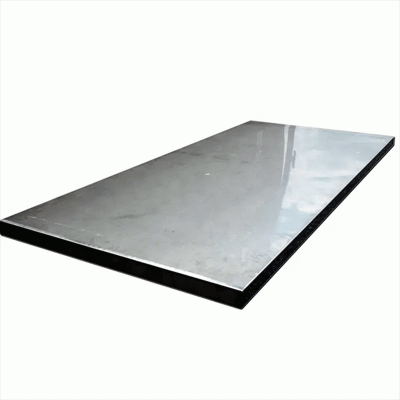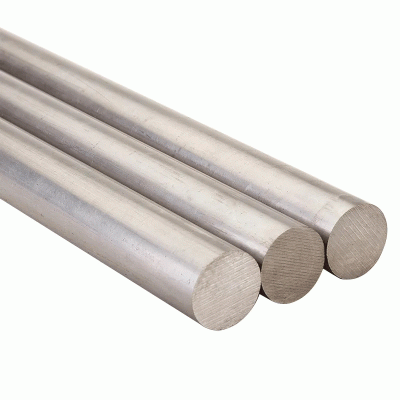What Is The Difference Between 904l Stainless Steel Pipe And 310s Stainless Steel Pipe?
Both are good steels for high temperature and corrosion resistance, but the 904L stainless steel pipe is much better. See the following for details:

310S stainless steel pipe main composition: 25Cr-20Ni-0.08C
Country code: 0Cr25Ni20 or 0Cr25Ni20Si2
310S stainless steel pipe designed for high temperature environment, oxidation resistance is better than 309S steel, used as heat resistant steel and boiler. Maximum service temperature can reach 1200 ℃, continuous service temperature 1150 ℃.
As a kind of high performance steel plate, its tensile strength and high temperature resistance are far beyond other similar varieties. High temperature ammonia will decompose into C and N ions, which will produce the following chemical reactions for stainless steel working in this environment for a long time:
1. Reacting with C, if there are particles with high carbon content in the environment, carbon will enter the metal, and then form internal carbon chromium (Cr23C6), which will eventually affect its corrosion resistance and lead to knife-edge corrosion. Carburizing generally occurs at temperatures above 1470°F (800°C). Internal carburizing metal can cause changes in mechanical and physical properties. Normally, oxygen can keep carbon out by forming a protective film on a metal surface. Higher nickel content and silicon content can reduce carburization to a certain extent. Metal dust is a particular form of carburization and usually occurs in the lower temperature range (660-1650°F or 350-900°C). Metal dust converts solid metal through a complex mechanism into a mixture of graphite and metal particles, which in turn creates deeper pits that eventually lead to localized corrosion.
2, reaction with N, in the presence of N ions, nitriding may occur. Oxides are generally more stable than nitrides, and therefore, in an oxygen-containing atmosphere, oxide crust is usually formed. This protective film is very good at blocking nitrogen entry, so in the atmosphere and gaseous combustion products environment, there is little need to consider the effect of nitriding. In pure nitrogen, especially in dry, cracked ammonia, where the oxygen content is very low, nitriding may occur. Nitride films can be formed on metal surfaces at relatively low temperatures. At high temperatures above 1832°F or 1000°C, the diffusion of nitrogen can rapidly penetrate metal and form internal nitrides at grain boundaries, affecting the mechanical properties of metal.
904L super austenitic stainless steel pipe is a low carbon high nickel, molybdenum austenitic stainless steel, which is introduced into France H? S corporation's proprietary material. It has good activation-passivation transformation ability and excellent corrosion resistance. It has good corrosion resistance in non-oxidizing acids such as sulfuric acid, acetic acid, formic acid and phosphoric acid. It has good pitting resistance in neutral medium containing chloride ions, and has good crevice corrosion resistance and stress corrosion resistance. It is suitable for various concentrations of sulfuric acid below 70℃, and has good corrosion resistance at any concentration and any temperature of acetic acid and mixed acid of formic acid and acetic acid under atmospheric pressure.
Main ingredient: 20Cr-24Ni-4.3Mo-1.5Cu
Brand number and standard: UNS N08904, DIN1.4539, ASTM A240 (new standard will be classified as stainless steel series, the original standard ASME sb-625 will be classified as nickel base alloy series), SUS890L.
Metallographic structure of 904L stainless steel: 904L is a completely austenitic structure. Compared with austenitic stainless steel with high molybdenum content, 904L is not sensitive to the precipitation of ferrite and α phase.
Physical and mechanical properties: density: 8.24g/cm3. Tensile strength: σb≥520Mpa. Elongation: δ≥35%.
Corrosion resistance of 904L stainless steel tubes: Due to the low carbon content of 904L (Max. 0.020%), there is no carbide precipitation under normal heat treatment and welding conditions. This eliminates the risk of intergranular corrosion that usually occurs after heat treatment and welding. Because of its high chromium-nickel-molybdenum content and the addition of copper, 904L can be passivated even in reductive environments such as sulfuric acid and formic acid. The high nickel content leads to a lower corrosion rate in the active state. 904L can be used at temperatures up to 40 degrees Celsius in pure sulfuric acid in the concentration range from 0 to 98%. In the concentration range of 0~85% pure phosphoric acid, its corrosion resistance is very good. In industrial phosphoric acid produced by wet process, impurities have a strong influence on corrosion resistance. The corrosion resistance of 904L stainless steel tube is superior to that of ordinary stainless steel in all kinds of phosphoric acid. In strongly oxidizing nitric acid, 904L stainless steel tubes exhibit lower corrosion resistance than high alloyed steel grades without molybdenum. In hydrochloric acid, the use of 904L stainless steel tubes is limited to a lower concentration of 1-2%. In this concentration range. The corrosion resistance of 904L stainless steel tube is better than conventional stainless steel. 904L steel has high pitting resistance. The crevice corrosion resistance is also very good in chloride solution. The high nickel content of 904L stainless steel tubes reduces corrosion rates in pits and crevices. Ordinary austenitic stainless steel may be sensitive to stress corrosion in a chloride-rich environment at temperatures above 60 ° C, and this sensitization can be reduced by increasing the nickel content of the stainless steel. Due to the high nickel content, 904L stainless steel tubes are highly resistant to stress corrosion cracking in chloride solutions, concentrated hydroxide solutions and h2S-rich environments.



